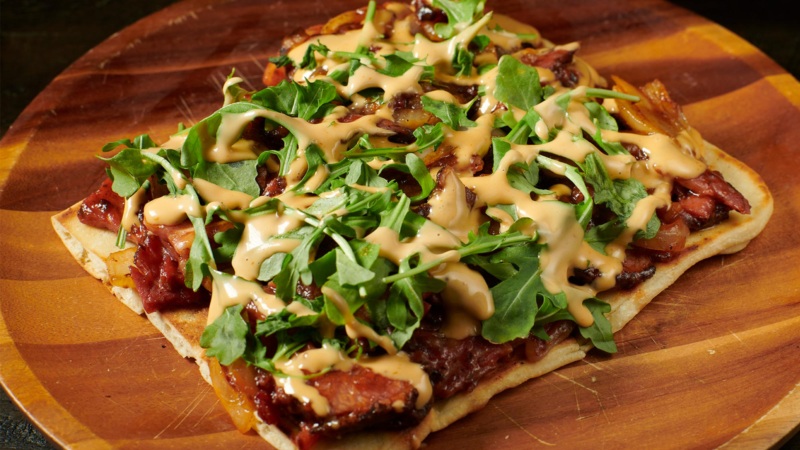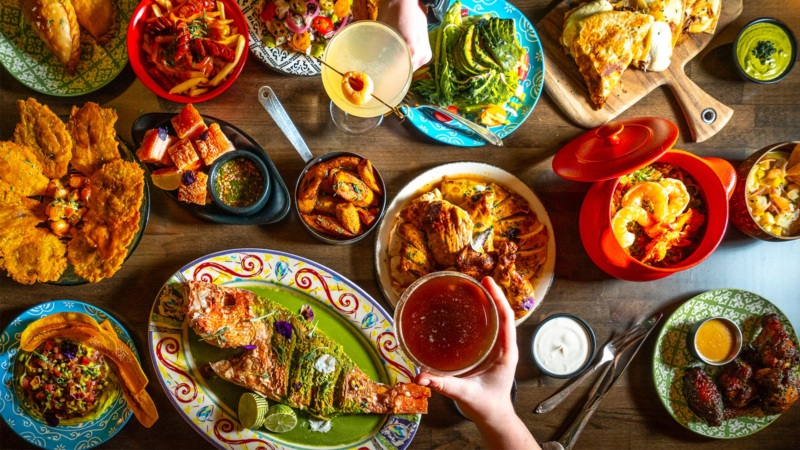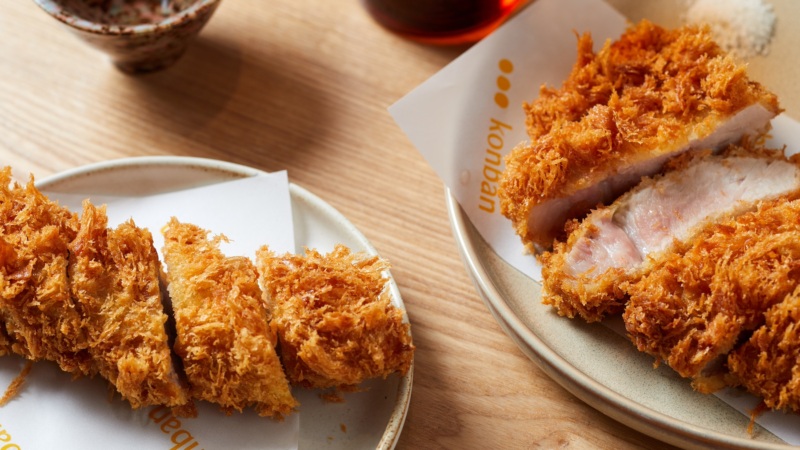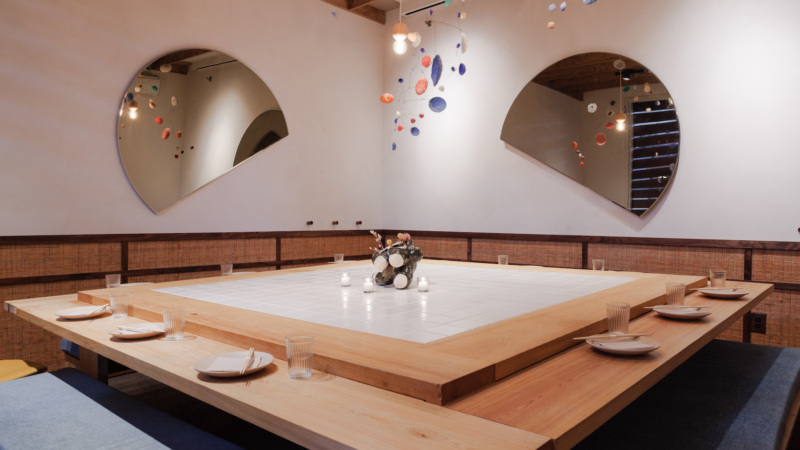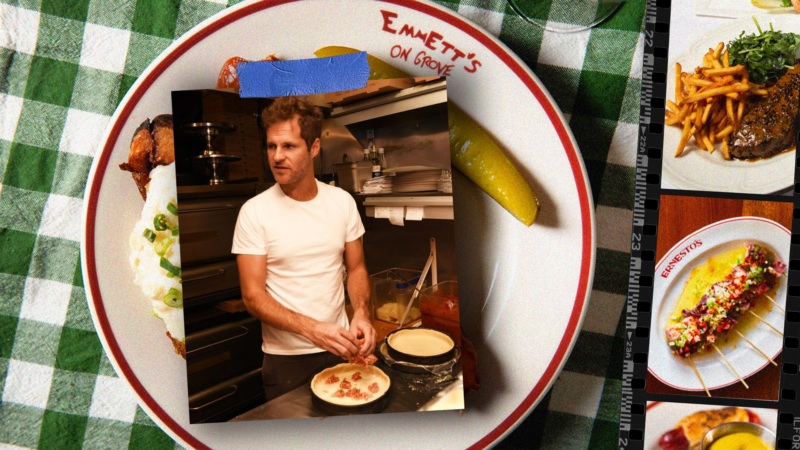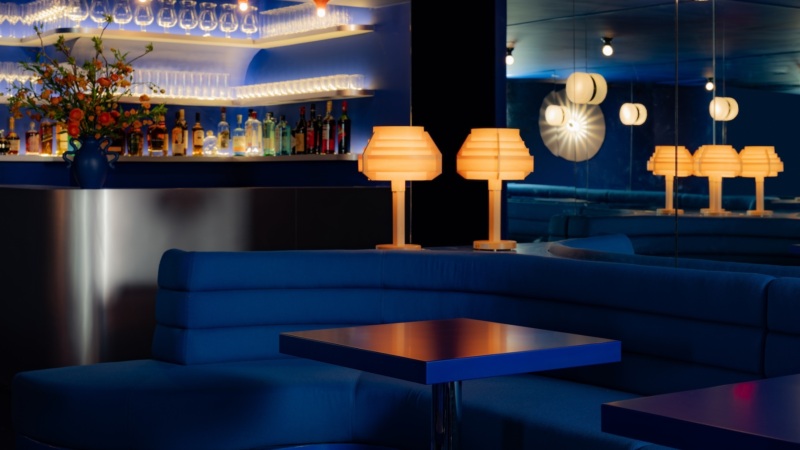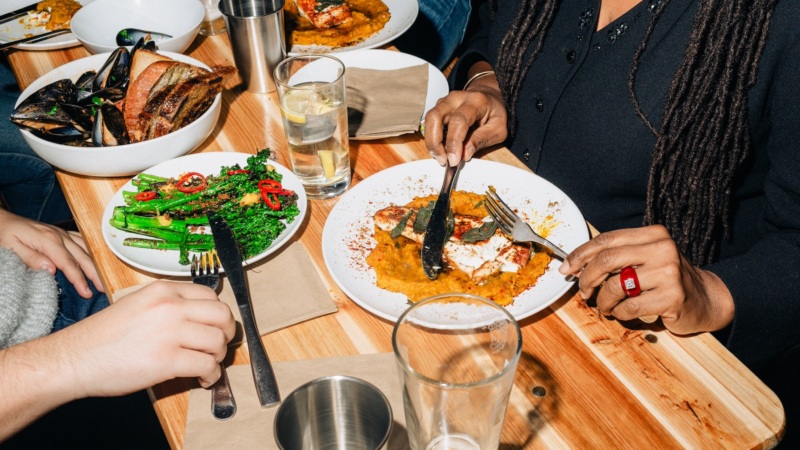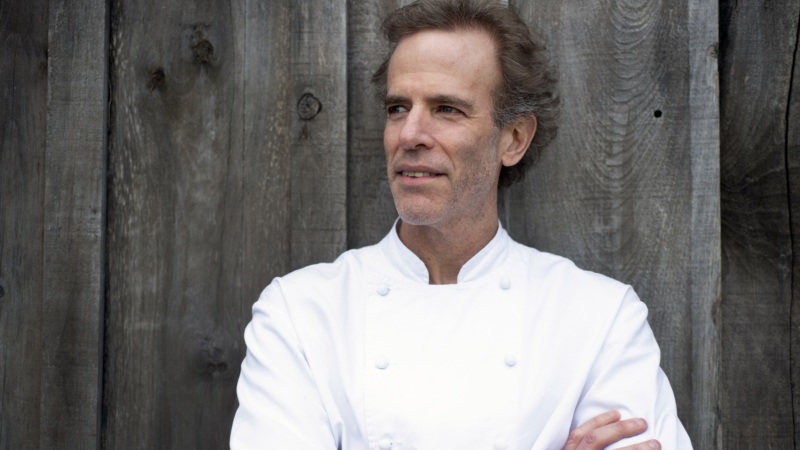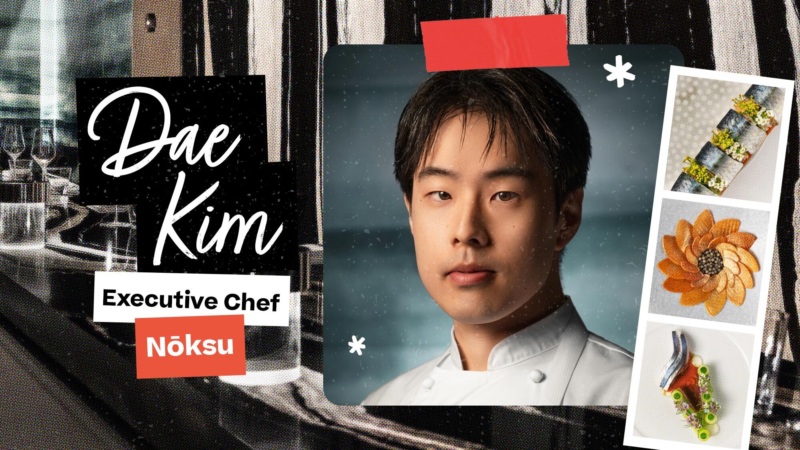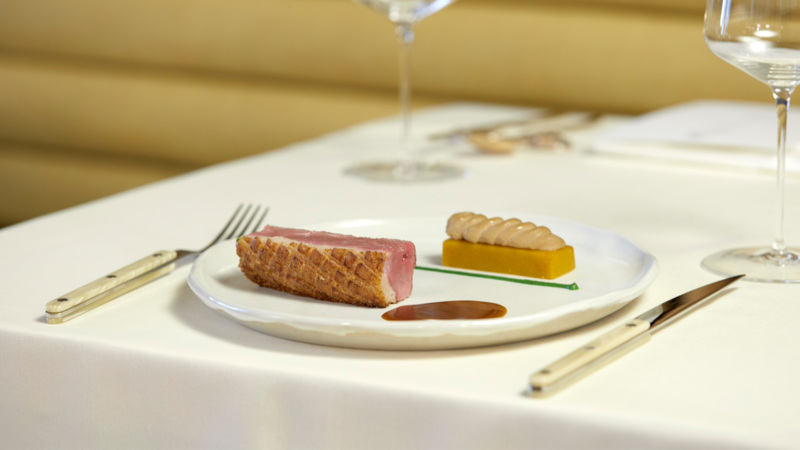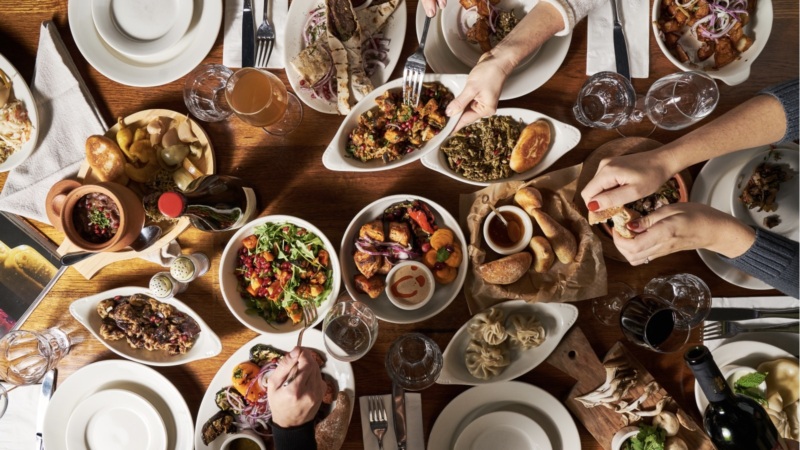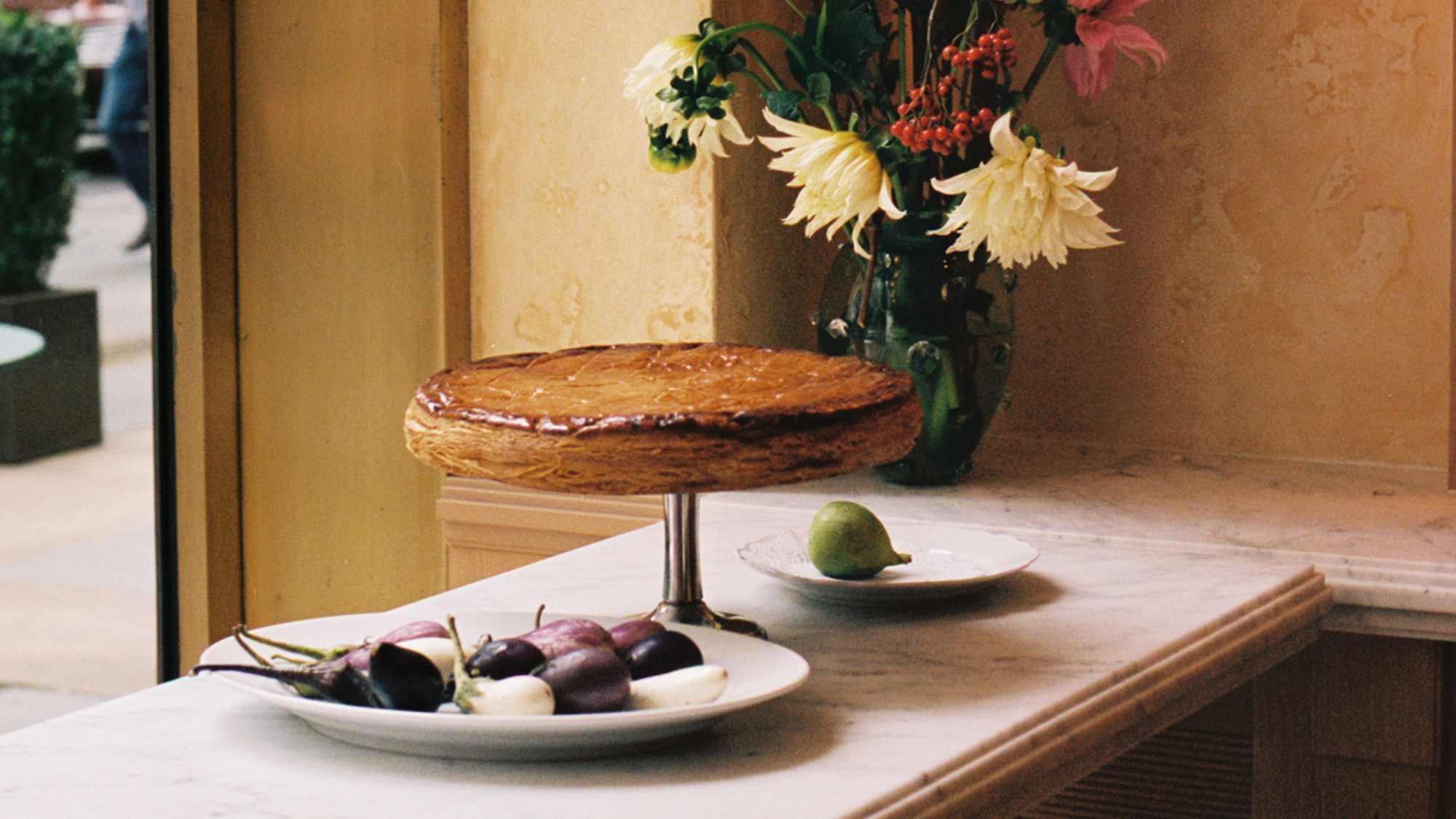
Six Things You Need To Know About New York’s Lodi
Before you go to a restaurant, what do you want — or need — to know most? In our series The Rundown, we’re sharing all the essentials about newly opened spots, as well as some of your favorites, and under the radar soon-to-be favorites.
This time, we’re zeroing in on Midtown Manhattan’s just-opened Lodi from Ignacio Mattos, the chef behind the city’s Michelin-starred Estela and the much-lauded Altro Paradiso.
Located at 1 Rockefeller Center Plaza in the former ground-floor space that housed Bouchon Bakery, Lodi has the same carefully considered, ingredient-driven approach on which Mattos built his reputation, but with a much more flexible format inspired by Italian caffè culture. There’s an all-day restaurant, a baking operation the likes of which Midtown hasn’t seen in a very long time, and a forthcoming evening beverage program that takes its cues from Italian drinking traditions. Here’s everything you need to know before you stop in at Lodi.
1. Lodi intends to become a community hub for New Yorkers within Rockefeller Center.
Historic Rockefeller Center in Midtown may be a popular stop on the New York City tourist circuit, but the idea behind Lodi is for it to become a place for Manhattanites by catering to the different needs of locals who both work in the building and live nearby.
“We drew inspiration from Italian aperitivo culture, with the hope of creating a neighborhood anchor that you can frequent at any time of the day,” say Mattos. “[Lodi] is a place where you can have an elevated full-service meal or grab a coffee and a cornetto in a rush. There’s a flexibility in the offerings that makes it more accessible.”
But flexibility doesn’t mean foregoing the superior quality familiar to those who know and love Estela and Altro Paradiso. Mattos’s signature approach — sourcing the best products and handling them with care — remains essential to the ethos behind everything that Lodi makes, whether it’s a freshly baked pastry in the morning, a panino di caprese at lunch, or a thoughtfully crafted supper like baccala alla livornese or a caper-infused vitello tonnato.
- Ignacio Mattos on Staying Afloat During a Pandemic — and What Comes Next
- Altro Paradiso’s Ignacio Mattos Loves Pizza From Botanica Bar, But Will Walk Miles for Soft Serve
- Eight Things to Know About New York’s Forsythia
- Everything You Need to Know About One White Street, Opening in Tribeca
- J-Spec Wagyu Dining Is New York’s Newest Omakase Sleeper Hit
- The Resy Guide to Outdoor Dining in New York
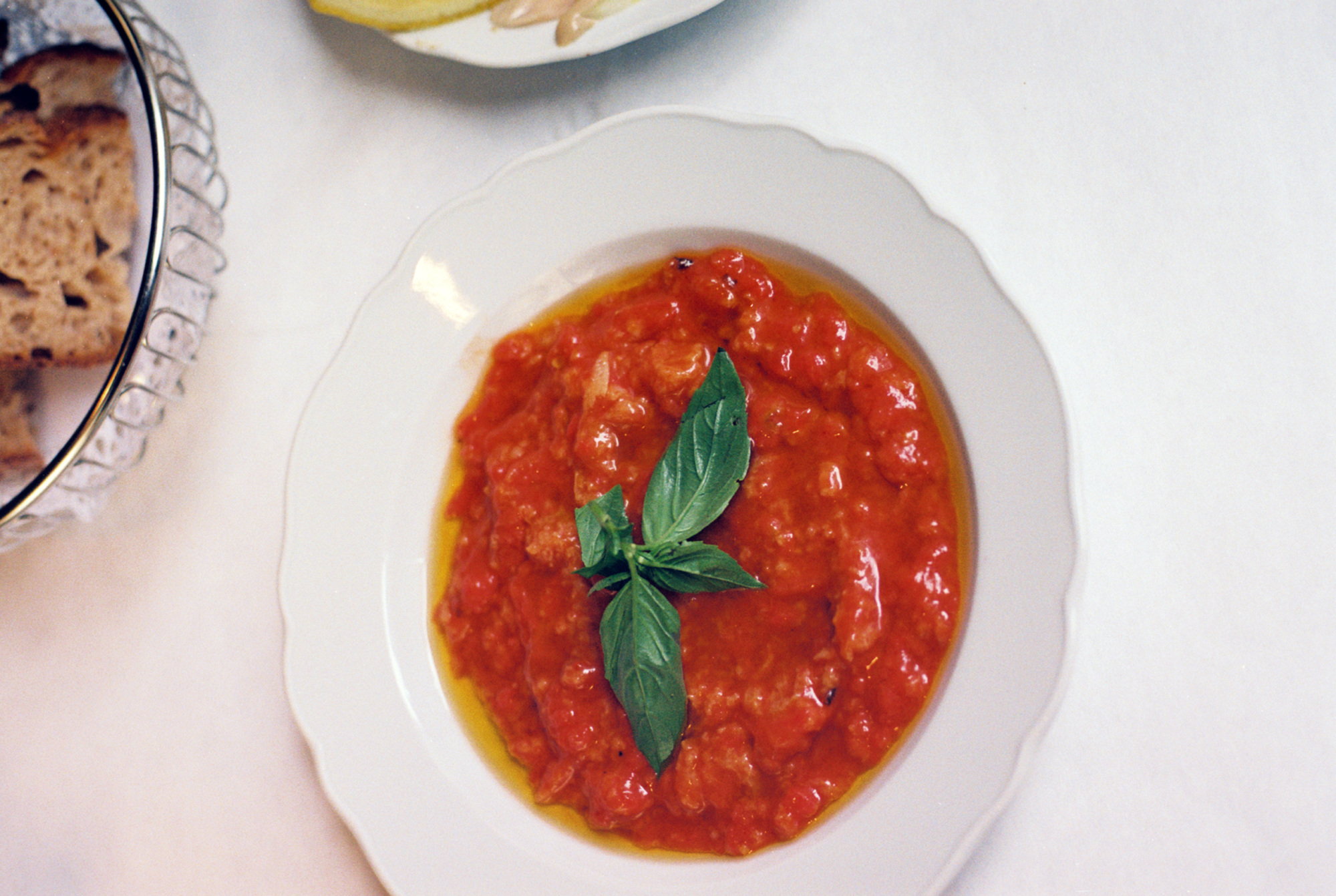
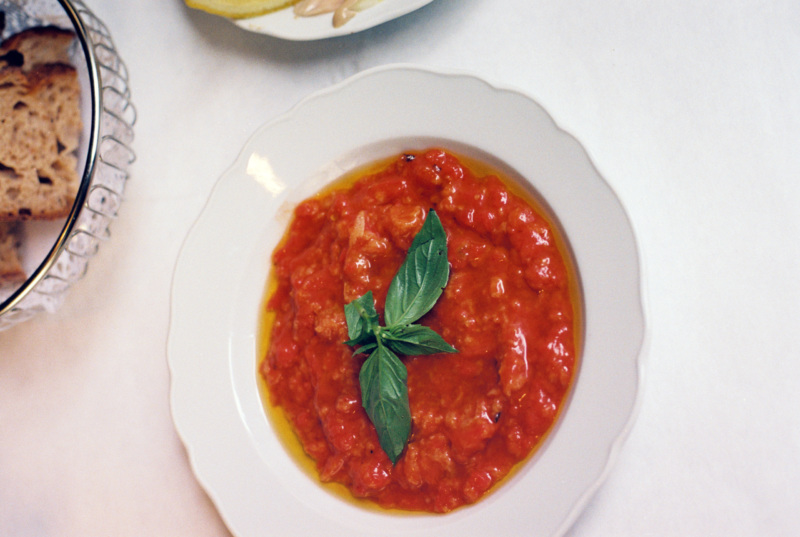
2. The all-day menu takes a page out of Italian café culture.
Among the inspirations for Lodi is Peck, a high-end, multi-floor food emporium in Milan that offers a range of options from grab-and-go bites to full-on dining experiences. Chef de cuisine Maxime Pradié, who worked at Mattos’s now-shuttered Flora Bar, oversees the creation of the housemade ingredients that appear on the menu.
“I am very excited that we are making our own ricotta, mozzarella, and bread,” Mattos says.
Breakfast offers a range of pastries made with house-milled flour, such as a raspberry- and cream-filled bombolone or a classic cornetto. Antipasti include that housemade ricotta, and a range of panini feature mozzarella and tomato or porchetta with pepper marmalade and arugula. The secondi, such as vitello tonnato or roasted chicken with broccolini, invite visitors to linger a bit longer over a meal.
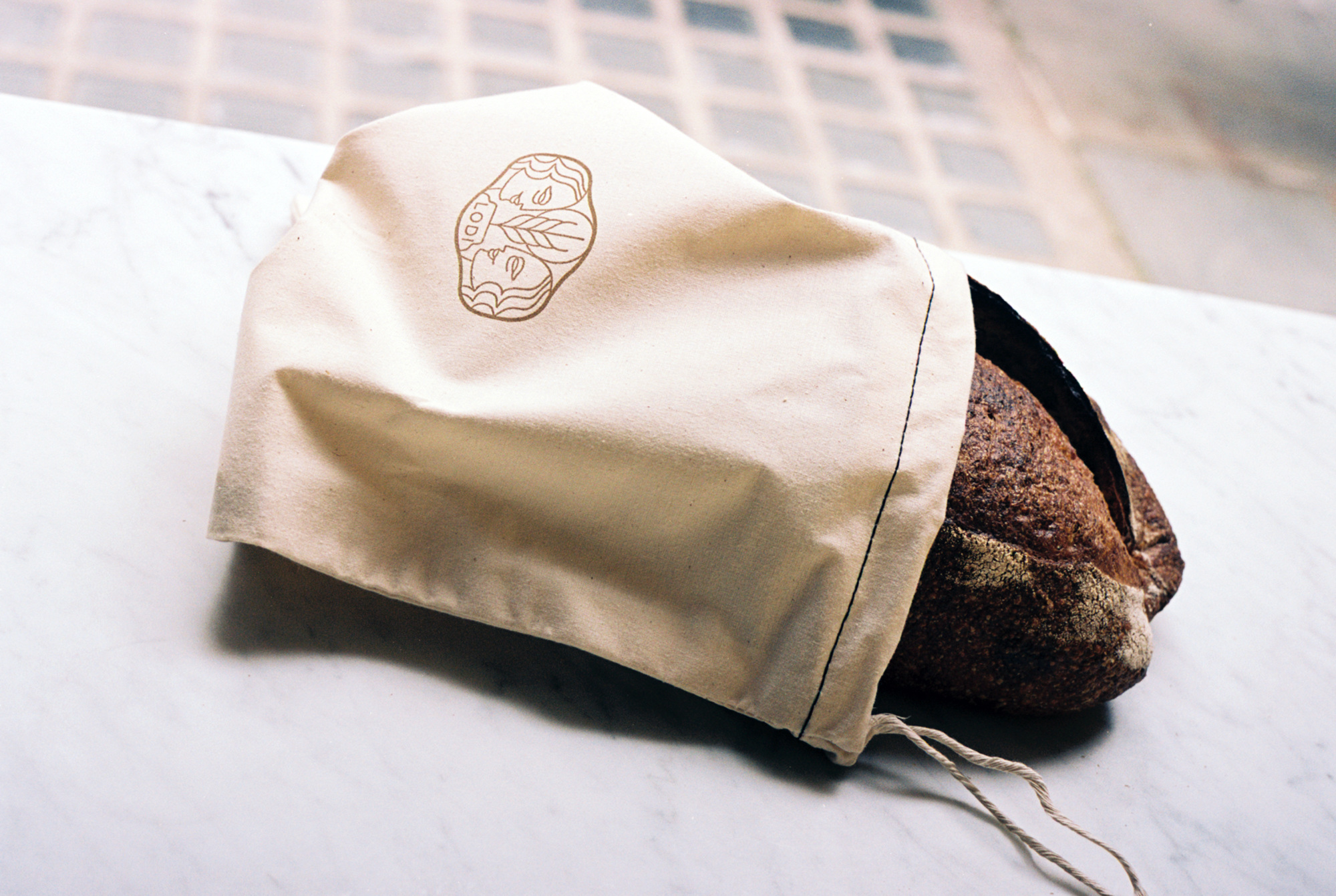

3. Don’t even think about skipping the bread.
One of Lodi’s most defining features is its ambitious approach to breads and pastries, all of which are milled and baked in-house. The effort is led by head baker and pastry chef Louis Volle, who previously worked at grains-obsessed restaurants like Blue Hill at Stone Barns in Pocantico Hills, N.Y., and Tartine in San Francisco. The emphasis at Lodi is on single varieties of wheats, ryes, and other grains using a large stone mill, which according to Mattos is the largest in Manhattan.
“Each day, we freshly stone mill our grains to preserve their nuanced flavors, capture nutrition, and honor tradition,” says Mattos. “Our goal is to create breads and pastries with craftsmanship and character that reflect the place they are from.”
Baking happens all day, which guarantees the cornetto or bombolone you’re about to tuck into was baked not too long before you ordered it. And baking mavens who want to experiment with Lodi’s hand-milled flour on their own should note that it’s available for sale on site.
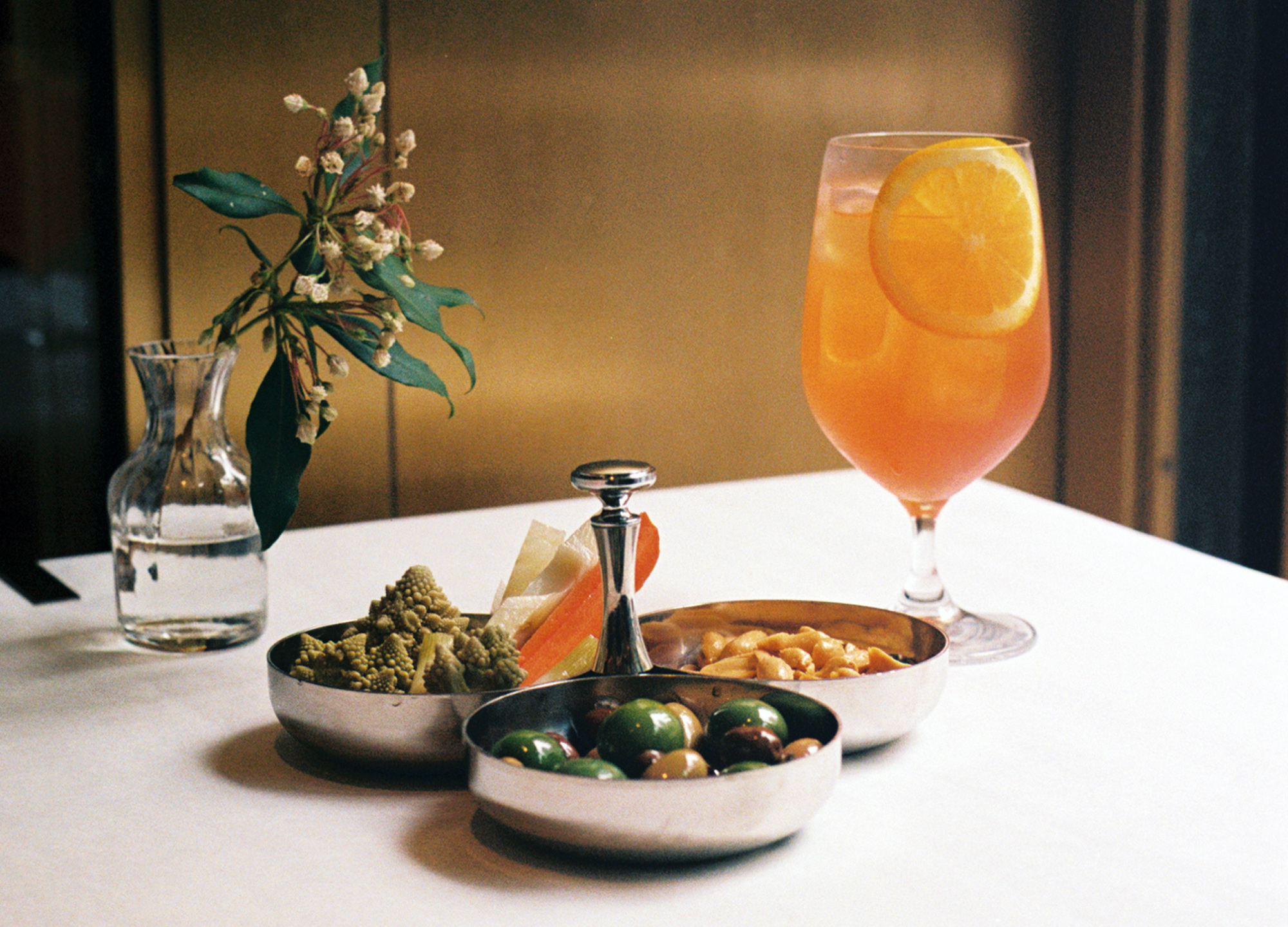
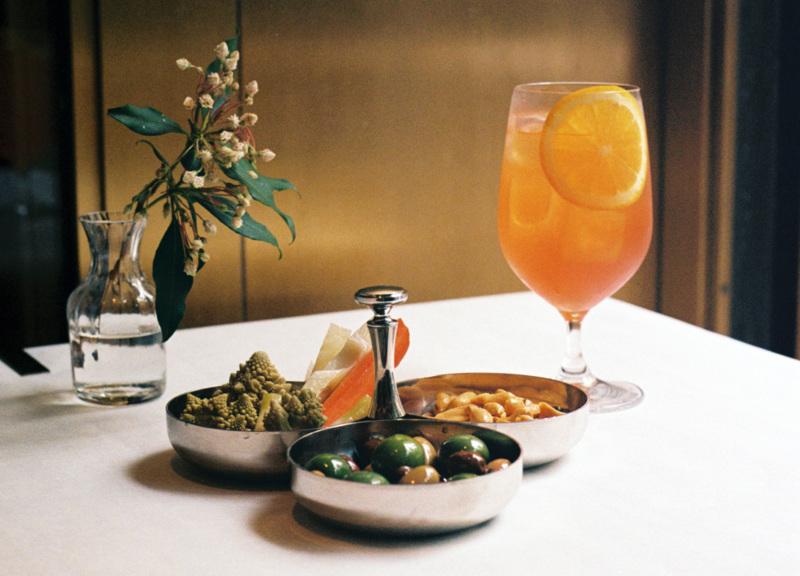
4. In October, Lodi will morph into a cocktail bar at night.
When Lodi’s spritz bar opens in the plaza in October, it will feature a carefully curated menu from bar director Stacey Swensen, formerly of Bar Pisellino and Dante downtown. Many of the cocktails are rooted in the drinking traditions of the bel paese: there are Negronis and espresso martinis, of course, along with a series of spritzes such as A Spritz di Citro, made up of prosecco, aperitivo bianco, Tequila reposado, and bergamot. The Rockefeller Martini is a nod to Lodi’s neighborhood, with either gin or vodka and vermouth secco, lemon oil, and pickles on the side. The non-alcoholic drink options include an invigorating-sounding Caffè Frappè, made with espresso, coconut, and allspice.
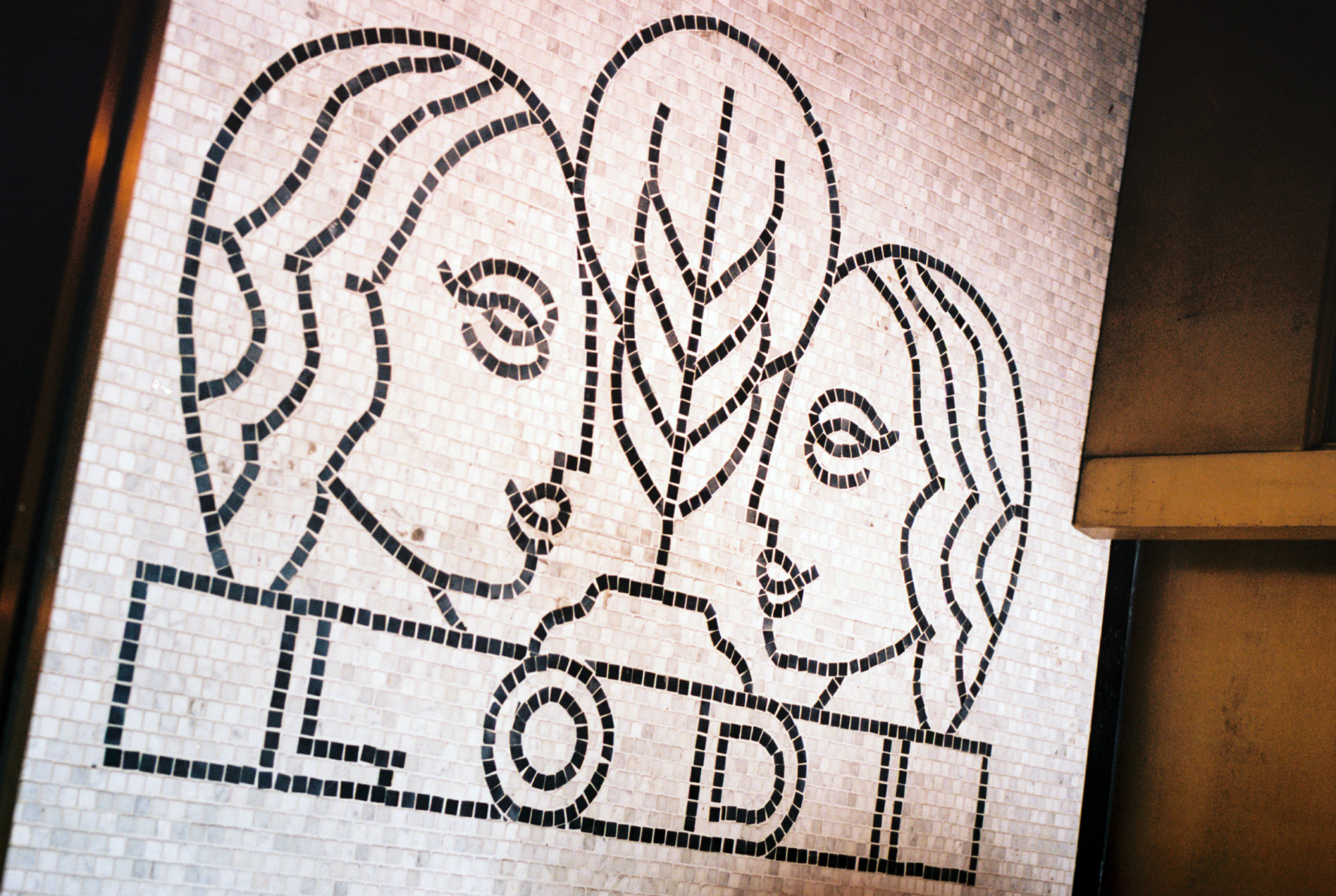
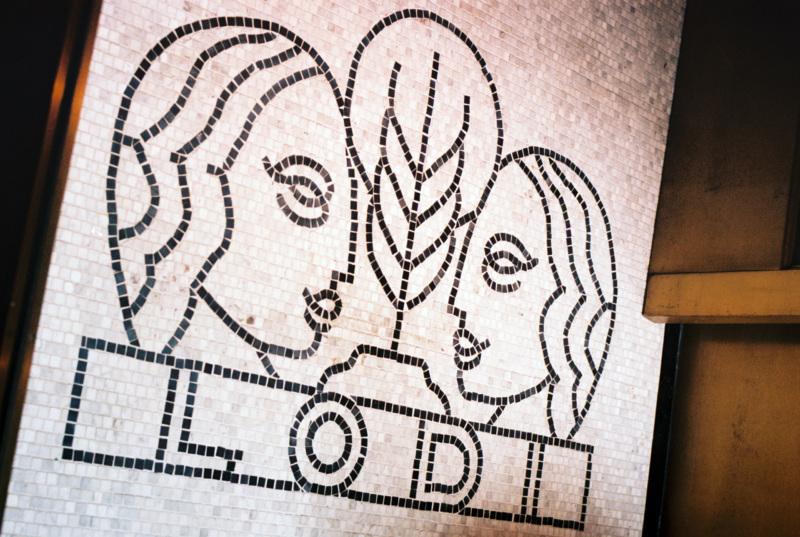
5. The Art Deco theme of Rockefeller Center extends into Lodi’s décor.
Mattos hired architect Richard H. Lewis and Ian McPheely of Paisley Design to reimagine the 1,000-square-foot space with references to the Art Deco style of Rockefeller Center, with the added challenge of creating an all-day dining area that could transition into a cocktail bar in the evenings. McPheely’s work, in particular, might be familiar to you if you’ve ever dined at New York dining institutions like Pastis or Balthazar.
“[Rockefeller Center] is one of the most iconic places in New York,” says Mattos. “We were excited to take inspiration from the Art Deco history.”
Cut glass chandeliers hang from barrel vault ceilings, which illuminate the marble countertops and leather barstools below. Large windows offer customers glimpses of the bread makers kneading dough and baking throughout the day, and wheat designs decorate the walls. Outdoor seating on white tablecloths beneath crisp white umbrellas extends the breezy, social feel of Lodi out onto the plaza.
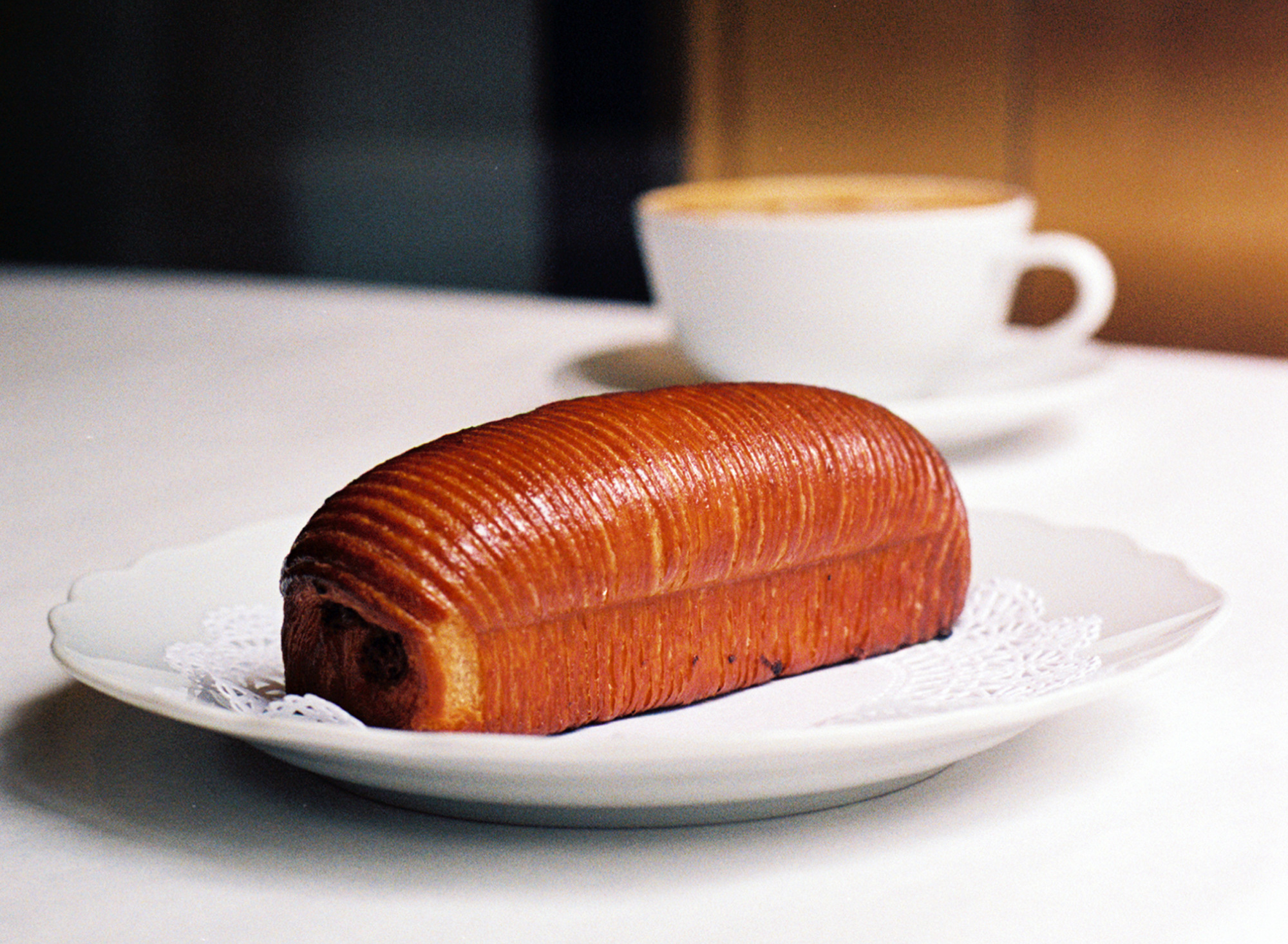
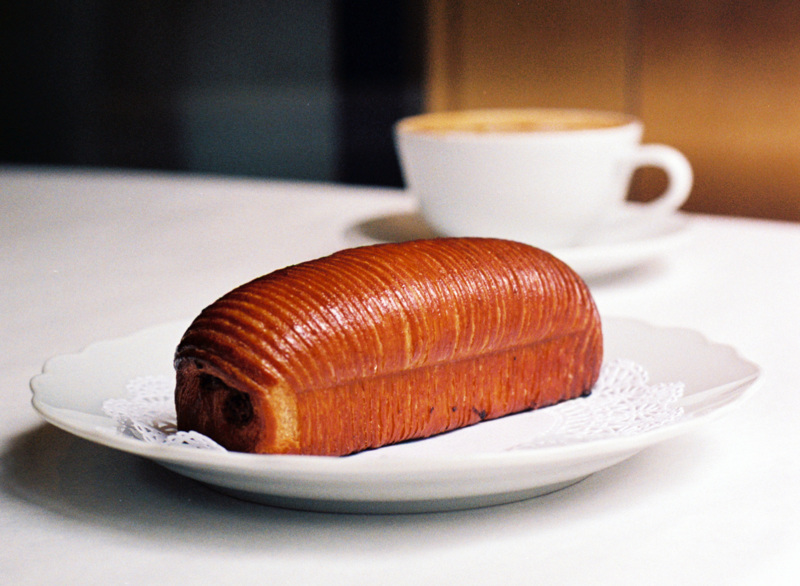
6. Mattos chose the name “Lodi” to reflect the city’s renewed appreciation for the role of dining establishments within communities.
Lodi, which is a conjugation of the Italian verb lodare, to praise, speaks to what Mattos sees as New York City’s new collective gratitude for restaurants, bakeries and other dining businesses as community hubs, especially after COVID-19 decimated neighborhood dining. (Lodi is pronounced like “lodeee.”)
“Lodi is the fruit of the pandemic,” says the Uruguay-born chef. “The vision has always been to bring New Yorkers to Rockefeller Center, and in order to do that we had to start from scratch, back to the beginnings of civilization, when community was built around the communal oven. All of that aside, we all were missing, praising how much restaurants, cafes, bakeries, and so on bring to our communities.”
Lodi is located at 1 Rockefeller Plaza, and is open daily for breakfast and lunch from 8 a.m. to 3 p.m., and will open for dinner and drinks in early October. Stay up to date and find more information at lodinyc.com or @lodinyc on social media.
Jennifer Flowers is a writer based in Seattle and New York City. Follow her on Instagram and Twitter. Follow Resy, too.




